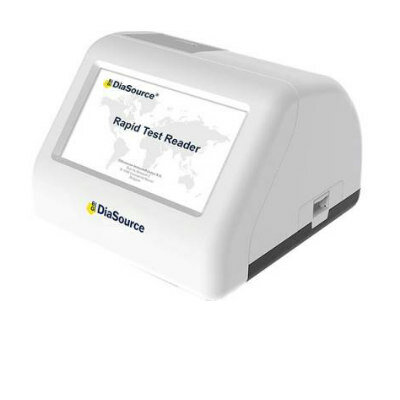Prototype Microarray System Automates Antimicrobial Drug Development
By LabMedica International staff writers
Posted on 08 Jul 2013
A prototype microarray system enables automatic screening of 1,200 individual bacterial or fungal cultures for their response to candidate drugs or other compounds.Posted on 08 Jul 2013
Microorganisms are typically still grown in Petri dishes, test tubes, and Erlenmeyer flasks in spite of the latest advances in miniaturization that have benefited other allied research fields, including genomics and proteomics. Culturing microorganisms in small scale would be particularly valuable in reducing time, costs, and reagent usage.
Toward this end, investigators at the University of Texas at San Antonio (USA) and the US Army Institute of Surgical Research (Fort Sam Houston, Texas, USA) developed, characterized, and applied a nanoscale culture system based on the opportunistic fungal pathogen, Candida albicans. The microarray consisted of 1,200 individual cultures of 30 nanoliters of C. albicans biofilms (“nano-biofilms”) encapsulated in an inert alginate matrix.
The microarray cultures were treated with a wide range of candidate drugs from the [US] National Cancer Institute (Bethesda, MD, USA) library, or with different [US] Food and Drugs Administration-approved, off-patent antifungal drugs in combination with FK506, an immunosuppressant, for identifying individual or synergistic combinations of compounds effective against biofilm infections.
Results published in the June 25, 2013, online edition of the journal mBio demonstrated that the nano-biofilm microarray was a robust and efficient tool for accelerating the drug discovery process. Combinatorial screening against a collection of 28 antifungal compounds in the presence of immunosuppressant FK506 (tacrolimus) identified six drugs that showed synergistic antifungal activity, while screening against the NCI challenge set small-molecule library identified three heretofore-unknown hits. This cell-based microarray platform allowed for miniaturization of microbial cell culture and was fully compatible with other high-throughput screening technologies.
"The antifungal screening results were similar to results in larger macroscale techniques," said senior author Dr. Anand Ramasubramanian, assistant professor of biomedical engineering at the University of Texas at San Antonio. "That gives us confidence that it could be used as a tool to replace existing techniques. We now are testing the microarrays with polymicrobial cultures—mixtures of fungi and bacteria—to see whether the technology can be used to explore treatments for mixed infections. We are also exploring clinical applications for the technique."
Related Links:
University of Texas at San Antonio
US Army Institute of Surgical Research
[US] National Cancer Institute














